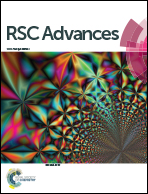Extracellular polymer substances and the heterogeneity of Clostridium acetobutylicum biofilm induced tolerance to acetic acid and butanol
Abstract
The mechanisms associated with how cells in biofilms exhibit enhanced tolerance to adverse environmental stress have attracted much recent attention. In this study, we investigated the tolerance mechanisms through observation of biofilm morphology combined with detection of fermentation activity, and discovered an improved way to culture biofilms for application in acetone–butanol–ethanol (ABE) fermentation. We found that a mature biofilm exhibited enhanced tolerance to acetic acid and butanol during ABE fermentation. A mature biofilm consists of a complex, heterogeneity three-dimensional structure, with a coated extracellular polymer substance (EPS). Therefore, when exposed to a harsh environment, cells in different regions of the biofilm displayed different levels of performance, resulting in cells with higher tolerance levels capable of survival, continued growth. The EPS acted as a barrier, limiting the transfer of harmful substances, and diluting their concentration in order to protect biofilm cells. During repeated-batch fermentations, the continuous fermentation formed biofilms, and the butanol concentration, productivity, and yield were 22.08%, 26.37%, and 61.08% higher, respectively, relative to suspended fermentation.


 Please wait while we load your content...
Please wait while we load your content...